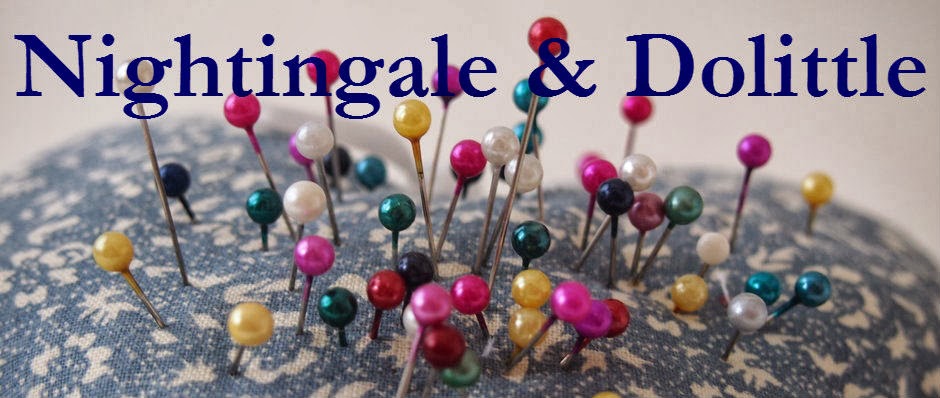Needlecord is one of my favourite fabrics for autumn and winter sewing. It feels beautifully soft and is cosy to wear, and as an added bonus is also easy to work with. What more could you want?! With that in mind, it's no surprise that needlecord was my fabric of choice for my first autumnal project of the year - a Stitched in Wonderland Daydreamer dress.
The Daydreamer dress is a relaxed fit dress with a button front bodice, grown-on short or long sleeves, gathered knee-length skirt, optional tie belt and (importantly!) in-seam pockets.
The bodice comes in three cup sizes (B, C and D) for bust measurements between 30" and 52". The hip measurement range for the pattern is 33" to 53".
The dress is a relatively straightforward project and my Daydreamer seemed to come together fairly quickly. The instructions are detailed and I found them easy to follow. They're illustrated with photos, which were mostly clear enough and did have additional marks added to clarify some details.
The only thing I might do differently if I make this pattern again (a definite possibility!) would be to sew the buttonholes before binding the neckline. The buttonhole function on my sewing machine is generally fairly reliable, but it does struggle a bit on thick fabric or if there's a thick layer just before/after a buttonhole so I actually ended up unpicking a small section of the neckline binding above my top buttonhole, then sewed the buttonhole and finally sewed the binding back in place.
In terms of sizing, I'd say if you follow the sizes recommended for your measurements then the fit will be very relaxed. I used the C cup bodice and made a size D at the bust, blending out to an E at the waist and hips. The D bust is a size smaller than recommended for my current measurements, and my waist is currently between an E and an F. The combination of the D and E sizes worked out well for me - my finished dress is a nicely relaxed fit without verging into sack-like territory.
The only alterations I made were to lengthen both the bodice and the skirt by 2 inches each. That's partly because I'm a bit taller than average (I'm 5'9"), and partly because I wanted the skirt to be slightly longer than knee length.
As I mentioned at the start of this post, the fabric I used is a lovely needlecord that I bought from Sew Much Moor. It's a dark navy with a pretty design of small white flowers with little gold accents. The fabric is great quality, is really perfect for this dress and feels like it'll wear well.
I really like how my Daydreamer dress turned out, and it's so comfy to wear. It works well on in its own, with a cardigan or layered over a t-shirt so I know that it'll be getting a lot of outings over the coming months! How's your autumn (or spring if you're in the southern hemisphere!) sewing going?

























































